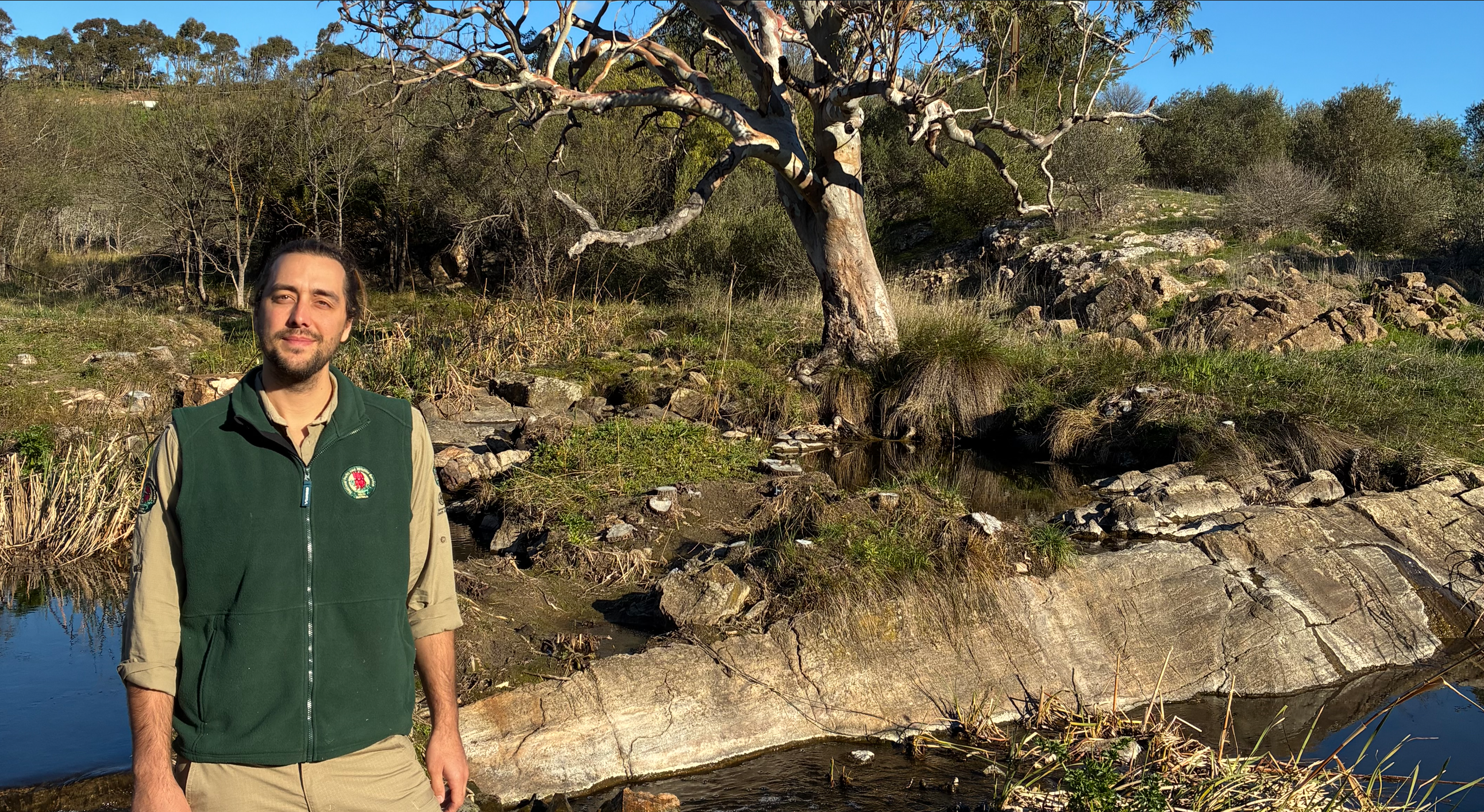
Welcome to Kauwi-marnirla-Field River, Adelaide’s newest conservation park
Kauwi-marnirla-Field River Conservation Park is a new conservation park in Adelaide’s southern suburbs on the traditional lands of the Kaurna People.
The Aboriginal co-name, Kauwi-marnirla translates to place of ‘two good waters’ and is pronounced ‘Cowee-ma-rni-rla’.
We asked Restoration Ecologist Angus Droogan-Turniski about the park and the work he’s doing to shape its future.
How long have you been a Restoration Ecologist and what is your background in parks?
“I started in Coorong National Park working on threatened coastal species, which sparked my passion for working with National Parks and Wildlife Service. In 2021 after a short time working with New South Wales National Parks, I relocated back to Adelaide and have since managed a number of parks across Adelaide’s south, including Glenthorne and Onkaparinga River. In 2025, I moved into my current role as Restoration Ecologist for Kauwi-marnirla, leading ecological restoration projects and supporting programs across the region.”

When did Kauwi-marnirla – Field River Conservation Park officially become a park?
“The park was proclaimed in November 2024 after the state government acquired privately owned land, as well as land managed by the Department for Infrastructure and Transport, with a vision protect the area under the National Parks and Wildlife Act. Since 2022, Green Adelaide has led early weed control and community engagement. A draft management plan is expected by the end of 2025.”
What is the history of this park?
“The land has a deep cultural history with the Kaurna People, and was once open grassy woodland with a spring-fed river. Mining and farming altered the landscape in the 1800s, with remnants of copper mining from 1847 still visible today, including a heritage-listed chimney. While weeds have taken hold, patches of native grasses and the occasional large Melaleuca lanceolata tells the story of what the land would have looked like.”
What is something about this park that the average person might not know?
“Most people have driven past the park along the southern expressway without realising what’s inside. A unique feature is the creek, which flows year-round, supporting native plants and a healthy bird population-especially woodland birds, which are declining across the region.”
Why is this park important?
“The park is important as it holds cultural significance to the Kaurna community, who are now reintroducing cultural burning practices to support land health and biodiversity. It’s also a key biodiversity corridor in the Field River catchment and offers a rare chance to restore threatened ecological communities. The riparian plants also help to improve water quality flowing to Hallett Cove.”
What are some of the native plants and animals that inhabit this area?
“You’ll find yellow-tailed black cockatoos, peregrine falcons, native fish, and a wide range of bush birds that are under-represented in the suburbs. The landscape includes native grasses, sheoaks, tea trees and some rare or endangered species, particularly near the watercourse.”
What are some of the common pests and weeds found in the area?
“Olive trees are the dominant weed we’re tackling. We’re working with Greening Australia, and others, to remove priority weeds, especially along the riparian zone.”
What is your vision for the park?
“We want to protect and enhance biodiversity, support Kaurna cultural fire practices, and create a resilient landscape that balances conservation with the park’s urban surroundings. While we can’t remove all threats, collaboration will help us build a stronger, healthier environment.”

Volunteering Opportunities
What is the importance of volunteers in your vision of the park?
“Volunteers are vital for long-term care of the park. While grants can fund early weed removal, ongoing maintenance and community advocacy will rely on a dedicated Friends of Parks group. Volunteers also help spread awareness and build community connection to the park.”
How can volunteers help?
“We’re currently inviting people to get involved, with the aim of forming a Friends of Parks and Nature Inc. group. Volunteers can help with planting, weed control, track maintenance, rubbish removal, scientific monitoring, heritage care, and community education.”
Interested in volunteering in the park? Get in touch with Angus.
Open Day & Volunteering Event — Tuesday 26 August 2025
Park of the Month
Throughout August, we’re celebrating Volunteering in Parks as part of National Parks and Wildlife Service Park of the Month! There are lots of volunteering events and activities to get involved in, find out more.
This project received funding through the Landscape Resilience Program of the Foundation for National Parks & Wildlife.